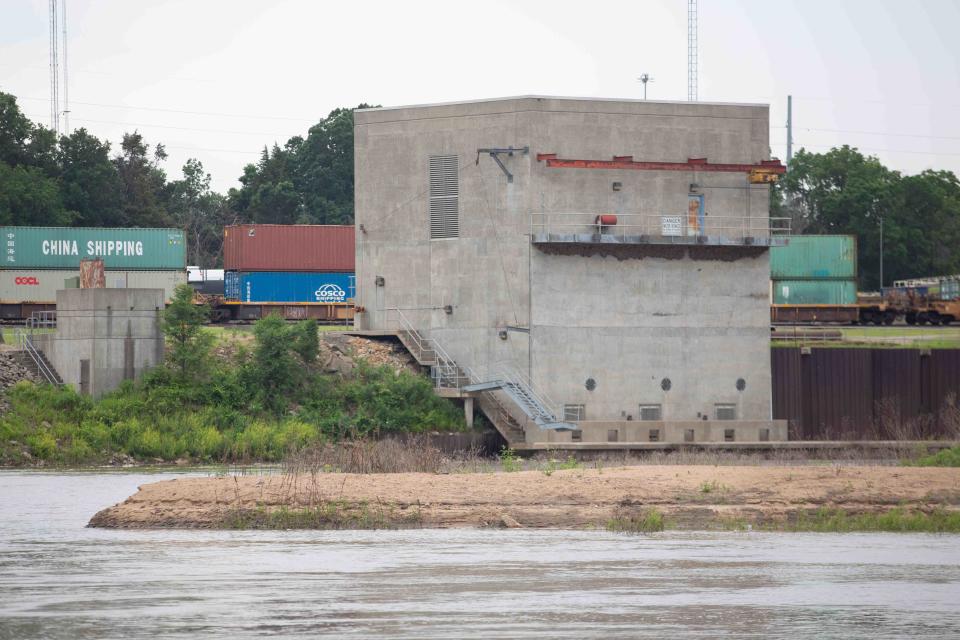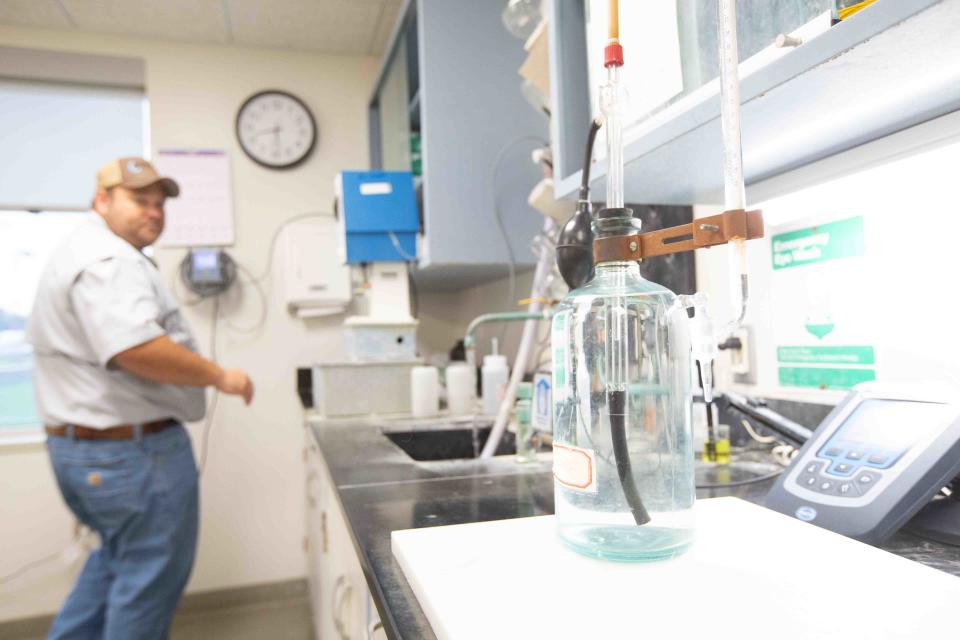'Forever chemicals' found in several Kansas water systems, with some being above EPA limit
In Kansas, per and polyfluoroalkyl substances over the newly established limits were found in tests in Fort Riley and Great Bend, although many water systems haven’t been tested.
The Kansas Department of Health and Environment is scheduling different water systems throughout the state for the more than 1,000 public water systems that include municipalities, rural water districts and privately owned water systems.
“Kansas public water systems will be monitoring their drinking water over the next three years to determine the level of presence of PFAS compounds,” said KDHE communications director Jill Bronaugh. “If they have compliance issues, they will have to work on treating the finished water to reduce those levels after 2029.”

Not all systems have been tested yet, though and some won’t until the end of 2025. Not all systems are at equal risk either, and water sources are at greater risk if they’re near process industries, refineries, airports and military establishments.
PFAS are a broad category of chemicals that are used in flame and heat resistant functions, and have been found in things like food containers, cleaning products, certain fabrics, personal care products and nonstick cookware. They're associated with higher cholesterol, disrupting liver function, pregnancy risks and kidney and testicular cancer.
PFAS, dubbed "forever chemicals" because they are indestructible, were invented in the 1940s. On June 25, the Environmental Protection Agency will begin regulating six of the more than 15,000 substances.
PFAS testing in Shawnee County
None of the 11 water districts that exist in Shawnee County showed PFAS above the limit in what has been tested so far. Sylvia Davis, director of utilities for the city of Topeka, said the city tested its water but won’t start regular testing until next year.

“It's beneficial that we're not sampling until 2025 because we can learn by watching and seeing what's happening," Davis said, "and we know that our threat is less simply because we've done a little testing.”
Some rural water districts, like Shawnee County Rural Water District 8, simply buy water from other water districts then distribute it to its patrons. But it will still have to test its water, even though its from sources that will also be required to test.
“The water is the same when it gets to us. It’s not like we're adding any forever chemicals into the water,” said Grant Peters, general manager of District 8.

Removing PFAS from water
Ridding a water source of PFAS can be a costly endeavor for municipalities and the new limits didn’t come with built-in funding for mitigation.
For the testing schedule alone, Topeka doesn’t need to hire any new staff, but if PFAS are found, it could be a substantial cost to water patrons.
“It's going to take a project. It's not something we can just go change tomorrow, it would be an engineer contract and a project in the future,” said Joey Filby, director of water plant operations in Topeka.
Treatment options to remove PFAS include filtering water through either activated carbon or ion exchange resins or membranes. Testing itself can be costly for smaller water districts.
“You know, it’s taxing for our staff, as far as we have our obligations we have to do for our customers,” Peters said. “We're having obligations we have to do for the EPA or the state of Kansas, and because they're getting it from the EPA, and so it's really taxing on us trying to fit everything in.”

Where have PFAS been detected in Kansas water?
The results from an Oct. 17 test show that for different types of PFAS, water from the Fusi Water Treatment Plant in Fort Riley was anywhere between 1.8 times to 5.5 times the limit depending on the specific PFAS being tested for.
The city of Great Bend’s water treatment at Crescent Park #5 found the highest concentration of PFAS in the state, ranging to 1.3 times the allowable limit to 36 times the allowable limit.
Arkansas City Kansas also was just slightly above required limits in a test conducted on Jan. 3.
Kansas’s testing schedule is starting with the smaller districts, those with fewer than 10,000 patrons, and working its way up to the largest districts in the state. The biggest municipalities in the state in Wichita and Kansas City, Kansas, found no PFAS.
Other districts in Lawrence, Salina and Hays detected PFAS but below the limit set by the EPA.
This article originally appeared on Topeka Capital-Journal: Kansas water testing for PFAS with new EPA standards

